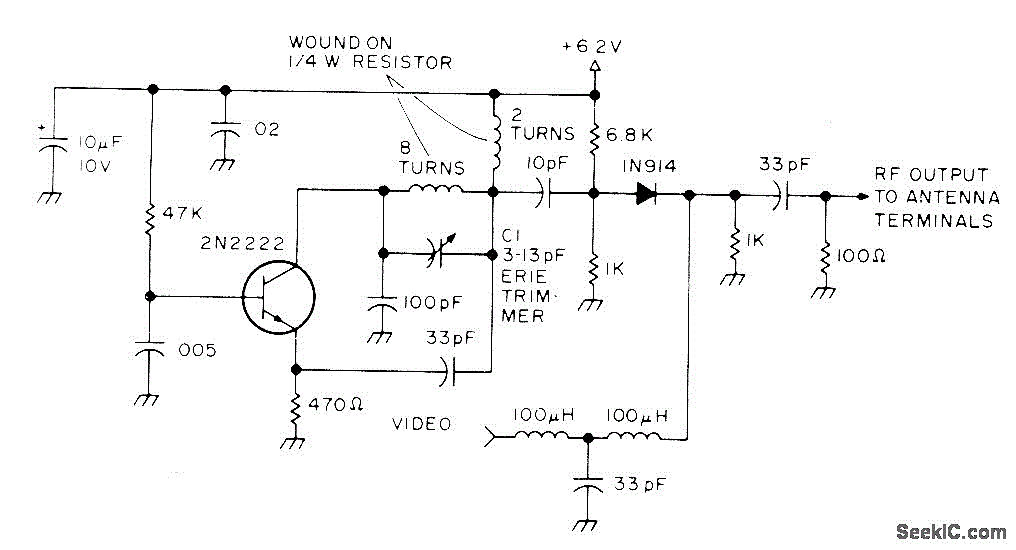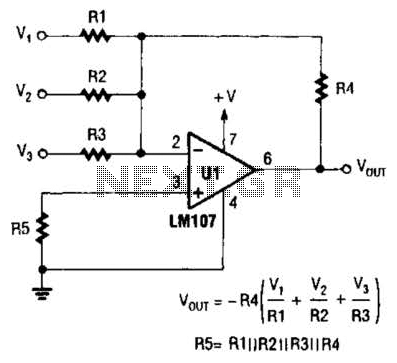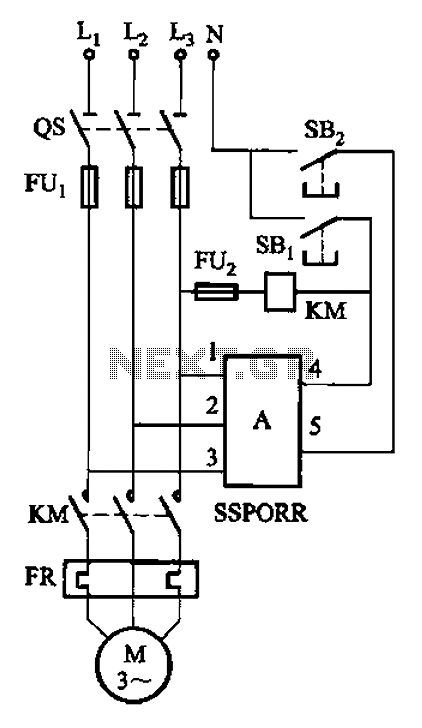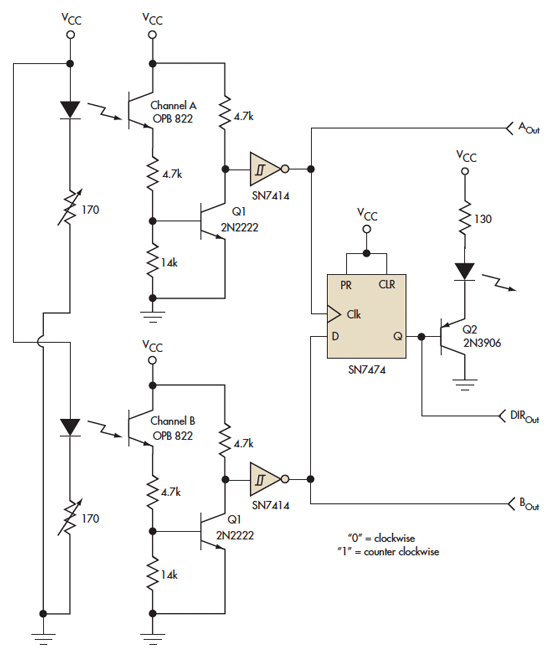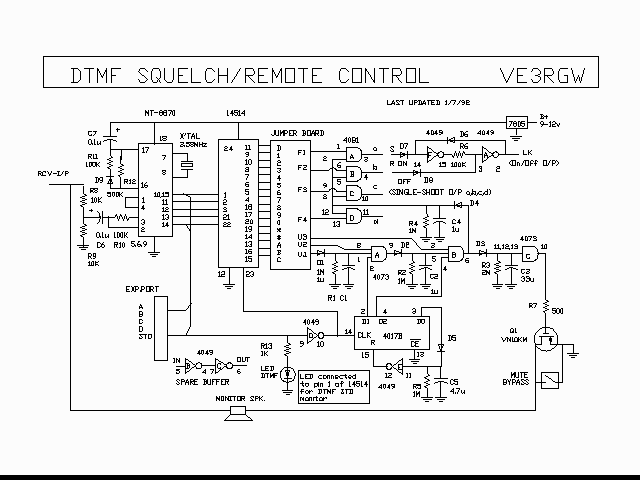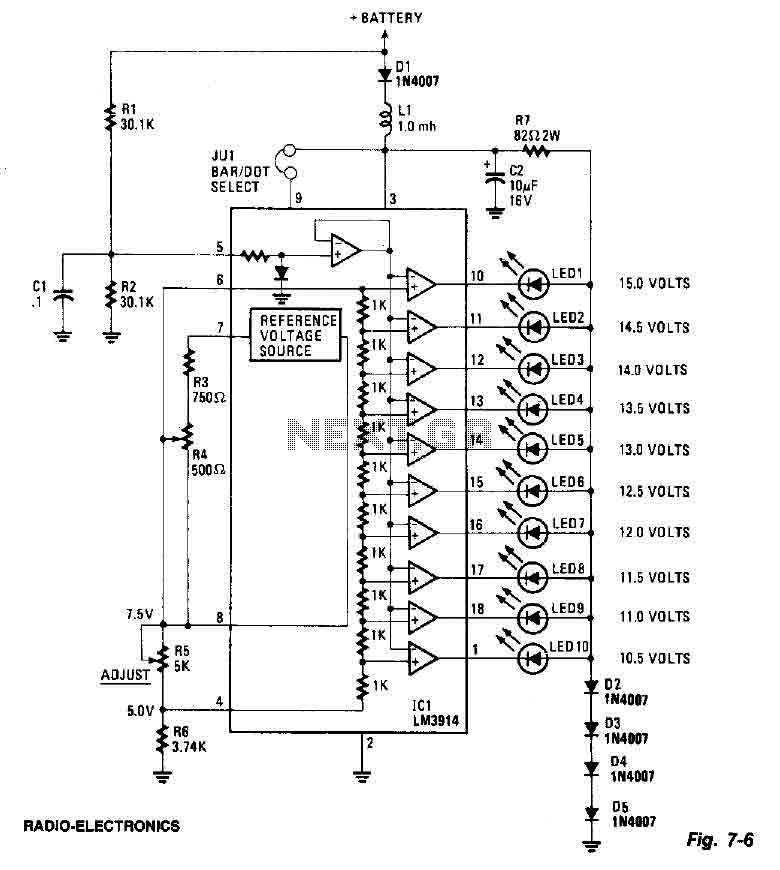
mp3 mode circuit wtv020sd 16p tutoria
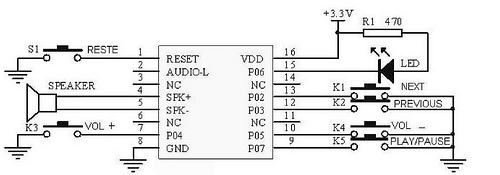
This tutorial focuses on the MP3 mode of the WTV020SD-16P module. With this straightforward circuit, AD4 format music files can be played. A video demonstration of this simple project is available at the end of the article. The project utilizes both a 5V and a 3.3V regulator. It was observed that the 3.3V regulator experiences significant heating when connected to a 9V battery; therefore, the battery was first connected to a 5V regulator before being routed to the 3.3V regulator. A 2GB microSD card was used for this experiment. For those new to the WTV020SD-16P module, it is advisable to read the recommended article, which discusses microSD card sizes and audio formats.
The WTV020SD-16P module is a versatile audio playback device that supports various audio formats, including AD4, making it suitable for projects requiring sound output. The circuit design typically includes the WTV020SD-16P module connected to a microSD card, which stores the audio files. The module interfaces with a microcontroller, allowing for control over playback functions such as play, pause, and stop.
In this application, a 5V power supply is essential for the proper operation of the module, while the 3.3V regulator is necessary for powering components that require lower voltage levels. The heating issue observed with the 3.3V regulator when powered by a 9V battery suggests that a voltage drop through a linear regulator can cause excessive heat dissipation. Therefore, using a 5V regulator to step down the voltage before it reaches the 3.3V regulator is an effective solution to mitigate this problem.
The use of a 2GB microSD card is optimal for storing audio files, as it provides sufficient space for multiple tracks while remaining cost-effective. It is crucial to ensure that the microSD card is formatted correctly and that the audio files are in the appropriate format for compatibility with the WTV020SD-16P module.
In summary, this project demonstrates a practical application of the WTV020SD-16P module for audio playback, highlighting the importance of proper power regulation and microSD card management for successful implementation.This tutorial is about mp3 mode of WTV020SD-16P module. With this simple circuit, you can play AD4 format music files. At the end of the article, you can see a video output of this simple and easy project. I used a 5V and a 3. 3V regulators for this project. I noticed that the 3. 3V regulator heats up heavily when connected to a 9V battery, so I con nected the battery to a 5V regulator first and then to the 3. 3V regulator. I used a 2GB microSD card for this experiment. If this is your first experiment with WTV020SD-16P module, I strongly recommend you to read this article. The recommended article explains about the size of micro SD card and audio formats. 🔗 External reference
The WTV020SD-16P module is a versatile audio playback device that supports various audio formats, including AD4, making it suitable for projects requiring sound output. The circuit design typically includes the WTV020SD-16P module connected to a microSD card, which stores the audio files. The module interfaces with a microcontroller, allowing for control over playback functions such as play, pause, and stop.
In this application, a 5V power supply is essential for the proper operation of the module, while the 3.3V regulator is necessary for powering components that require lower voltage levels. The heating issue observed with the 3.3V regulator when powered by a 9V battery suggests that a voltage drop through a linear regulator can cause excessive heat dissipation. Therefore, using a 5V regulator to step down the voltage before it reaches the 3.3V regulator is an effective solution to mitigate this problem.
The use of a 2GB microSD card is optimal for storing audio files, as it provides sufficient space for multiple tracks while remaining cost-effective. It is crucial to ensure that the microSD card is formatted correctly and that the audio files are in the appropriate format for compatibility with the WTV020SD-16P module.
In summary, this project demonstrates a practical application of the WTV020SD-16P module for audio playback, highlighting the importance of proper power regulation and microSD card management for successful implementation.This tutorial is about mp3 mode of WTV020SD-16P module. With this simple circuit, you can play AD4 format music files. At the end of the article, you can see a video output of this simple and easy project. I used a 5V and a 3. 3V regulators for this project. I noticed that the 3. 3V regulator heats up heavily when connected to a 9V battery, so I con nected the battery to a 5V regulator first and then to the 3. 3V regulator. I used a 2GB microSD card for this experiment. If this is your first experiment with WTV020SD-16P module, I strongly recommend you to read this article. The recommended article explains about the size of micro SD card and audio formats. 🔗 External reference
